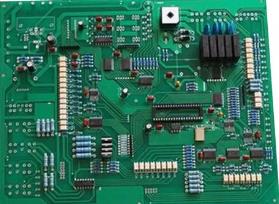Learn about the difference between smt, ems, PCBA, oem
smt means patch processing, PCBA includes PCB production and patch processing, oem and ems have similar meanings, which means foundry, including the production, assembly, testing, complete machine, etc. of the entire product. The scope of ems is wider. PCBA oem can also be used as the meaning of PCBA processing.
PCBA processing
What is PCBA processing?
PCBA processing in a narrow sense refers to the service of providing PCB boards, electronic components purchasing and PCBA processing. PCBA processing in a broad sense refers to the provision of a complete set of PCBA processing services from electronic program design, electronic product development to material purchasing, prototype testing, and later batch processing and production.
Let's take the consumer electronics field as an example to talk about the processing modes. With the joint cooperation and advancement of foreign-funded enterprises and local enterprises, the foundry model has emerged, which not only reduces production costs, but also increases the added value of products. There are three roles in the industry chain: suppliers, EMS (Electronics Manufacturing Service) companies, and brand customers.
1. The general production mode of primary EMS companies
The general production mode of primary EMS companies is processing with supplied materials.

Processing refers to: the foreign client (brand customer) provides all the raw and auxiliary materials and components, which are processed by the undertaking enterprise (OEM or PCBA processing plant), and then the finished product is delivered to the foreign client for manufacturing. Pieces and finished products are not priced, and the undertaker shall charge processing fees in accordance with the contract.
In PCBA processing with incoming materials, import and export are two steps of a transaction. The ownership of materials and finished products belongs to the entrusting party, and the accepting party does not need to pay import fees or bear the sales risk.
Its business chain is shown in the figure below:
Advantages: Brand customers purchase raw materials by themselves, quality is controllable, and costs can be reduced.
Disadvantages: It takes up a lot of funds for brand customers, and it is difficult to manage cash flow and inventory.
2. The general production mode of large EMS companies
The general production mode of large EMS companies is feed processing.
Processing with imported materials refers to the operation of importing some or all of raw materials, auxiliary materials, components, accessories and packaging materials with foreign exchange by domestic entities with the right to import and export, and processing them into semi-finished or finished products and then reselling them for export. Activity.
In the processing of incoming materials, the ownership of the materials is transferred from the supplier to the PCBA processing factory. After the OEM processes the materials into finished products, they are sold to brand customers to earn profits from the finished products.
Based on the characteristics of the final product and business considerations (such as high-precision electronic products such as mobile phones), the number of parts required is extremely large, and the ability of brand owners to connect with all suppliers one by one is limited or the cost is too high, so the industry chain will adopt the feed processing model.
1. The general mode of feed processing-Non-Buy&Sell mode
In the processing of imported materials, the brand merchants will certify the suppliers and entrust EMS companies with certain industrial integration capabilities to purchase part or all of the parts and components from the certified suppliers.
Under the Non-Buy&Sell model, the planning department of the brand customer first sends out the demand plan of the complete machine to the planning department of the OEM. After receiving the demand, the planning department of the OEM transfers it to the various purchases of the purchasing department, and the purchasing department of the OEM The personnel will calculate the required quantity and use time of the raw materials according to the amount of raw materials. Before purchasing orders to suppliers, OEM's central purchasing department will directly negotiate with suppliers the purchase price and purchase contract. After receiving the purchase price and purchase contract, each purchaser will place an order to the supplier and provide the order quantity and required time. After receiving the OEM's order, the supplier conducts internal production before sending the raw materials to the OEM's factory.
During the entire transaction process, the OEM pays the supplier directly.
advantage:
For brand customers: Mainly responsible for the management and control of the finished product stage, saving a lot of manpower, financial resources and material resources; and through supplier certification, it can still control the quality of raw materials, and can transfer funds and inventory pressure to OEM factories;
For the OEM factory: Under the condition of ensuring sufficient raw materials, suppliers can be freely selected to a certain extent, and the purchase price and inventory are also controlled by the OEM itself.
shortcoming:
For brand customers: OEM factories have the risk of falsely reporting purchase prices, which may erode the profits of brand customers.